 By Ray Rivers By Ray Rivers
August 11th, 2021
BURLINGTON, ON
OPINION
It’s been sixty years since the New Democratic Party was formed. Surely that must make them the old democratic party by now. In all that time they only once become the second party in Parliament. And that was only after their charismatic leader, Jack Layton, had catered to the separatists, promising to ignore a Supreme Court ruling and let Quebec separate on a 51% sovereignty vote.
The NDP’s socialist roots go back to Saskatchewan premier Tommy Douglas, who introduced Canada’s first universal medical care system. Douglas’ party merged with the Canadian Labour Conference in 1961 to become the NDP which also made them a labour movement, at least for unionized workers.
 NDP’s socialist roots go back to Saskatchewan premier Tommy Douglas, who introduced Canada’s first universal medical care system. More recently the NDP has tried to become the other green party, despite the potential conflicts between environmental conservation goals and jobs in the resource and energy sectors. And after a half century of marriage between labour and the socialists other cracks have developed. Some labour leaders have become frustrated being tied to a a party which was unlikely to ever become government, and so shifted their support to the Liberals.
The party faced a major crisis in the 60s and 70s when a determined group of members, called the Waffle, sought a more aggressive policy shift towards socialism and economic nationalism in Canada. Fearing a loss of the Quebec NDP wing, they also called for greater accommodation for Quebec’s sovereignty demands. The Waffle was booted out of the party. Still some of its ideas found their way into Liberal government policy at the time, such as the Foreign Investment Review Agency (FIRA).
A little over a decade later the Mulroney government replaced FIRA with the more welcoming Investment Canada. The folly of that move became particularly clear last year when this country was struggling to find COVID vaccines. Toronto based Connaught Labs, which had been a world leader in the development and manufacture of vaccines was gone, it’s technical know-how exported and its trained research staff relocated elsewhere.
 Much of what the Manifesto called for has taken place – except for the elimination of fossil fuels The Leap Manifesto presented another milestone issue for the party. In 2015 about 60 representatives from Canada’s Indigenous rights, social, environmental, faith-based and labour movements came together over two days to identify 15 policy actions for the future. Though the initiative was non-partisan, it had been driven by social and climate activists Avi Lewis and Naomi Klein, both with deep roots in the NDP.
LEAP was so well conceived and written that, within a couple weeks of its creation, over 25,000 Canadians had endorsed it. Yet, during the 2015 federal election NDP leader Mulcair shunned the initiative, thinking it was too radical, even as his party was endorsing LEAP riding by riding. Today almost all of the LEAP demands have been adopted, at least in principle, by the current Liberal government and some are even accepted by the Conservatives.
 He was a powerful leader of the Opposition – but did not have the vision the country wanted and lost an election he thought he had in the bag. THE CANADIAN PRESS/Fred Chartrand Tom Mulcair had been an effective opposition leader but his lack of vision set the party back from the break-though which early polling in the 2015 election had promised. Jagmeet Singh, who replaced him, is an articulate politician but has not been able to bring the party back from its third place, though his class baiting has won him some support.
Singh’s problem is that the Liberals have learned to overtake the NDP on some key progressive policies. For example, when Singh promised an NDP government would ban single use plastics by 2022, Trudeau announced he would start the process in 2021. It is hard to determine how much the NDP does in fact influence government policy, though the Liberals mostly have to rely on the NDP to keep them in office.
Even should the Green Party collapse within itself, as it appears to be doing, the NDP are unlikely to supplant the Liberals, at least so long as Mr. Trudeau avoids something like another sponsorship scandal. And while Trudeau’s image and likability may have become tarnished over his last five years in office, as happens to all politicians, Canadians do not seem in a hurry to replace him in these scary times we are living through.
The LEAP project, now retired, can claim credit for stimulating debate and placing so many of its priorities into action. It was ultimately endorsed by the NDP and its ridings, despite the concern of the Alberta contingent over the language on fossil fuels. Today the NDP is looking south of the border for its inspiration, and is trying to develop a Canadian Green New Deal.
 Jagmeet Singh chose to prop up the minority Liberals; there wasn’t much else he could do. Whatever else Mr. Singh has accomplished by propping up the minority Liberals over the last couple years, he has failed to get Mr. Trudeau to move forward on some key socially progressive priorities, like universal pharmacare, a basic annual income and proportional electoral representation. Unless his party improves its position in the upcoming federal election, his leadership may well be at issue.
 A strong mind, an incredible political pedigree and now a willingness to run for public office. Avi Lewis, one of the instigators of the LEAP project, has thrown his hat into the ring to run for the NDP in the upcoming election. Lewis hails from a political heritage, including his father Stephen and grandfather David, which rivals that of Justin Trudeau. If Lewis wins his seat nobody should be surprised to see him advance to leadership in the NDP and to challenge Trudeau for the top job in the country. Maybe the party could even change its name, dropping the amateurish sounding ‘New” given how long it has been around.
There was a time when Pierre Trudeau and Ed Broadband mulled a political merger between the parties. But that idea was anathema to the western NDP movers and shakers at the time and nothing came of it. So unfortunately for both parties in Canada’s first-past-the-post electoral system, a vote for the NDP will end up being another vote on the left which the Liberals won’t get. And that makes it just like a vote for the opposition Tories.
 Ray Rivers, a Gazette Contributing Editor, writes regularly applying his more than 25 years as a federal bureaucrat to his thinking. Rivers was once a candidate for provincial office in Burlington. He was the founder of the Burlington citizen committee on sustainability at a time when climate warming was a hotly debated subject. Ray has a post graduate degree in economics that he earned at the University of Ottawa. Tweet @rayzrivers Ray Rivers, a Gazette Contributing Editor, writes regularly applying his more than 25 years as a federal bureaucrat to his thinking. Rivers was once a candidate for provincial office in Burlington. He was the founder of the Burlington citizen committee on sustainability at a time when climate warming was a hotly debated subject. Ray has a post graduate degree in economics that he earned at the University of Ottawa. Tweet @rayzrivers
Background links:
NDP –
Leap – More Leap – Unions – NDP Constitution –
Jagmeet Singh – Waffle – Avi Lewis –

 By Staff By Staff
August 11th, 2021
BURLINGTON, ON
An extended heat warning has been issued by Halton Region for Aug. 11-13, 2021.
When a heat warning is issued by Halton Region, residents can stay cool at all open Burlington Public Library branches.
Heat warnings are issued by Halton Region when temperatures are expected to be at least 31°C and overnight temperatures are above 20°C for at least 3 days or humidex is at least 40 for at least 2 days.
 Cooling Centre information: Cooling Centre information:
• Open 11 a.m. to 4 p.m. during the heat warning
• Community members can use for 1-hour increments
• Screening for COVID-19 upon arrival
• Measures in place to ensure physical distancing
• Non-medical face coverings required
Central Branch
2331 New St.
905-639-3611
Aldershot Branch
550 Plains Rd. E.
905-333-9995
Alton Branch
3040 Tim Dobbie Dr.
905-634-3686
Brant Hills Branch
2255 Brant St.
905-335-2209
New Appleby Branch
676 Appleby Line
905-639-6373
Tansley Woods Branch
1996 Itabashi Way
905-336-5583

 By Staff By Staff
August 10th, 2021
BURLINGTON, ON
The Burlington Federal Green Party Association is pleased to announce that Christian Cullis will be the Green Party’s candidate for Burlington in the next federal election. In a membership vote last month, Christian was elected as the party’s standard bearer for a widely anticipated federal election that could be called as early as this week.
“I’m honoured to have earned the support of my fellow Greens for the next election,” Cullis said. “We’ve seen many records broken the last few years in Canada, none of them good – hottest temperatures, unprecedented numbers of forest fires, extreme storms and flooding, worsening air quality, and Canada continuing to be one of the top ten global emitters of GHGs. We can do so much better than we have on climate change, and I believe that’s what Burlingtonians want.”
 Christian Cullis will be the Green Party’s candidate for Burlington Cullis is an Aldershot resident who graduated from McMaster University in Hamilton in 2016 with a B.A. in Political Science, and a Masters in International Relations. He grew up in Burlington just a few blocks away from the world-famous Royal Botanical Gardens, and holds protecting Burlington’s spectacular natural beauty as one of his core values. Christian’s passion for climate action has seen him volunteer with activist organizations such as Extinction Rebellion, which focuses on increasing awareness and engagement by Canadian youth on voting and climate change. During the pandemic, he has been employed as a landscaper, and prior taught students English in South Korea and tutored after school here in Burlington.
Now focused on representing Greens in Burlington, Cullis promises to run a full campaign. “Climate change is the most critical issue for my generation and for our collective future,” he asserts. “We can’t afford half-measures or government backsliding anymore, and that will be my message on the debate stage and on the doorstep. The Green Party offers a robust and practical climate policy to meet Canada’s emissions targets, but we are much more than a one-issue party. We have real solutions to the other crises Canada faces, such as housing affordability, spiralling income inequality, the impact of the pandemic on Canadians, or the stuttering pace of Canada’s reconciliation with Indigenous peoples. I’m looking forward to offering Burlingtonians who want real action on these issues an opportunity to mark their ballot with confidence for the Green Party in the next election.”
Christian Cullis invites all Burlingtonians to reach out and get involved by contacting burlington@greenparty.ca for volunteer, donation, and platform inquiries.
Email: burlington@greenparty.ca
We will learn more about Mr Cullis when there is an opportunity to interview him.

 By Pepper Parr By Pepper Parr
August 10th, 2021
BURLINGTON, ON
OPINION
I keep hearing about the “expected fourth wave” as if it a certainty.
What would make a fourth wave certain? Because not enough people are fully vaccinated – that’s something we control isn’t it.
You get vaccinated – if you’re not vaccinated you can’t enter a supermarket; you can’t go to work.
 No one has the right to decide they are not going to be vaccinated when it is now clear that vaccination stop the spread of the virus. No one has the right to decide they are not going to be vaccinated when it is now clear that vaccination stop the spread of the virus.
There is a lot of chatter about privacy and human rights. We are all for free speech – but that doesn’t give someone the right to stand up in a dark theatre and cry out Fire! Fire and leave people scrambling to get out.
There are limits.
During the Second World War men were drafted into the armed forces. They may not have wanted to go to war but their country forced them to go.
There were an unfortunate few that chose to desert – when they were caught they were shot by a squad of Canadian soldiers ordered to shoot them
Tough times called for tough decisions. That’s what governments are in place for.
 When a restaurant looks like this – you are seeing dashed hopes and a dismal future for the owners and the employees. A fourth wave will do huge damage to the hospitality sector. Will office workers be able t return to their buildings?
I shudder to think what it will do to the children who will be returning to classrooms in September
I put the following questions to the Chair of the Halton District School Board:
Does the Board have a policy that requires everyone working in a school, whatever the capacity, to be fully vaccinated before they return to work in September?
Will the Board make any exceptions and if they do – what are the exceptions?
Andrea Grebenc was quick with her response:
“The Board does not have the power to do this. We can’t even ask the vaccination status for the COVID-19 vaccination.
“This has to be a provincial mandate. (MMR. Diphtheria, Tetanus are shots that are mandated, but there are exemptions.
“I assume” said Grebenc “that since the Education Worker Unions pushed so hard in the spring for priority vaccination, that we do have a high percentage of all staff vaccinated.
“Halton has one of the highest vaccination rates in the province (83% one dose and 74% double vaccinated for 12+).”
All true and the infection numbers for Burlington look pretty good (if a disease with the capacity to kill can be described as looking good) but the numbers province wide are not good – we are back where we were in June and nearing the 21 day period for phase 3.
The province is going to want to say something positive – difficult to do when many are talking about the expected fourth wave.
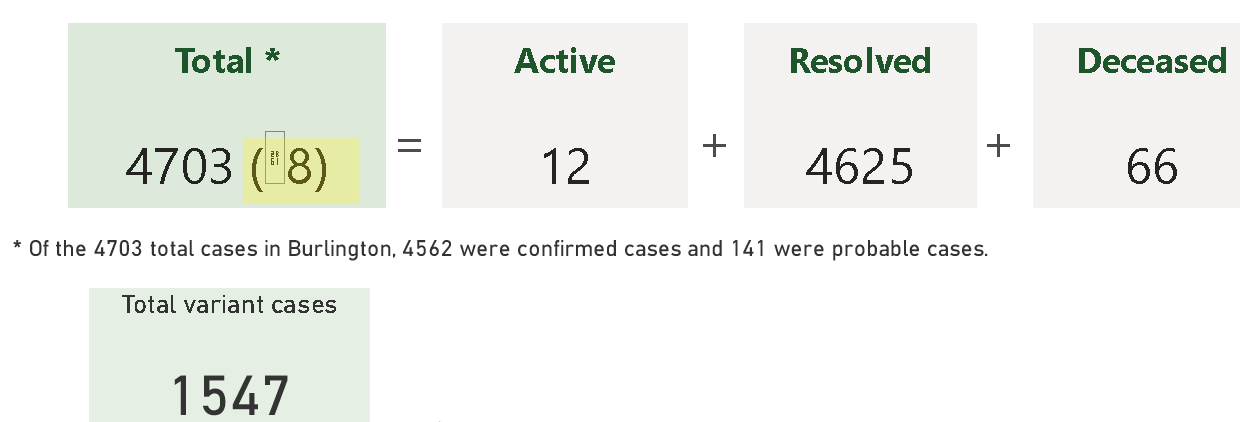 These are the numbers from the Regional Public Health Office for Burlington on August 9th No word either on just what we are going to do once the kids are back in the classrooms where colds are part of the business.
Andre Picard, Globe and Mail columnist who has been doing sterling work on the Covid19 crisis passed along a phrase he got from a colleague who is Chair of the federal Covid19 immunity Task Force who said ”Nasty fall ahead”.
Is this what we are sitting here waiting for that fourth wave to happen?
Salt with Pepper is the musings, reflections and opinions of the publisher of the Burlington Gazette, an online newspaper that was formed in 2010 and is a member of the National Newsmedia Council.

 By Staff By Staff
August 9th, 2021
BURLINGTON, ON
It was an upsetting weekend for Burlington Humane Society.
Both the animal shelter at 740 Griffith Court, and The Animal Aid Attic, its second-hand store at 479 John Street, suffered setbacks.
 Property was stolen at the Griffith Court location where a lone thief stole a heavy-duty utility wagon. The wagon is valued at over $200.00. Surveillance cameras caught images of the thief as he stole the wagon. Property was stolen at the Griffith Court location where a lone thief stole a heavy-duty utility wagon. The wagon is valued at over $200.00. Surveillance cameras caught images of the thief as he stole the wagon.
“It was obvious that the thief knew what he wanted. He rode his bicycle directly to the shelter’s back patio where the wagon was kept,” said Doug Shirton, Burlington Humane Executive Director.
“He immediately took the wagon and rode off. The whole incident took about three minutes.”
The wagon is an essential piece of equipment that is used daily to move items to and from a back storage shed as well as carting away animal waste to a back dumpster. “We hope this theft is not the start of a campaign of theft from our premises.”
 The second-hand store, The Attic, was vandalized late Saturday night or early Sunday morning. Police notified Burlington Humane early Sunday morning that someone threw a rock through the front window. Clean up began immediately and through Sunday morning. The second-hand store, The Attic, was vandalized late Saturday night or early Sunday morning. Police notified Burlington Humane early Sunday morning that someone threw a rock through the front window. Clean up began immediately and through Sunday morning.
Shirton later learned that there were several businesses vandalized by a rowdy group that night. The huge plate glass window will cost several hundreds of dollars to replace.

 By Ray Rivers By Ray Rivers
August 9th, 2021
BURLINGTON, ON
OPINION
If he hadn’t been politically assassinated by his own caucus, Patrick Brown might have become the 26th premier of Ontario and perhaps formed it’s first truly Progressive Conservative government since Bill Davis.
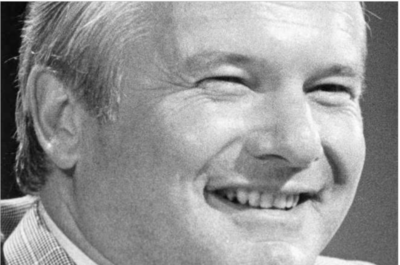 Bill Davis: A moderate conservative in his time and what the province needs in these troubling times. Davis, referred to himself as bland. He was a moderate conservative from all accounts. He seemed more comfortable with colleagues like Brian Mulroney, Jean Chretien, Pierre Trudeau, John Tory and Bob Rae, than right wingers from his own party like Mike Harris or Doug Ford, for example.
Davis was a careful master of compromise between progress and conservation. He understood that when it comes to policy, it’s more important to do what in the public interest than to defend your ideology. And he clearly believed when it came to delivering his messages that bland beat bragging and bravado hands down.
Davis will always be the education premier to me, even though he was education minister proper only during my formative years of schooling. But he was far more than the person who modernized and expanded the provincial education system. To those who remember him, he was considered one of Canada’s best loved provincial premiers, vying for that spot with Alberta’s Peter Lougheed.
 The Davis decision to kill the construction of the Spadina Expressway into the downtown core of Toronto was a brilliant political stroke. Davis also expanded health care, implemented regional government, initiated GO service, killed the Spadina Expressway, and made the Ontario civil service bilingual. Moreover Davis played a key role in repatriating Canada’s constitution while doing more than his part keeping the country together during those early years of living with Quebec’s separatist government.
 Cardinal Gerald Emmett Carter and Bill Davis met often. The Cardinal and the Premier, according to provincial myth decided to extend catholic schools into high school over cognac and good cigars. Trying to please all people usually means that you displease some. Davis’ decision to enable full secondary schooling by the Catholic church upset more people than it satisfied, and his successor lost the next election because of that error in judgement. His rationalization of Ontario’s municipalities led to an unprecedented level of urban sprawl which today is choking Ontario’s roads.
Building coal-fired electrical power plants was a mistake that took several decades and a change of government to correct. And in all his 13 years in office Davis never managed to balance his budget, even during relative boom times, averaging $2 billion in dept annually as the net debt to GDP grew from 2% to 15.2% during his tenure.
But Davis’ leadership style is what perhaps made him such a respected, if not loved, premier. There was no ‘we ‘or ‘they’ in his world, and he imparted a positive vibe of optimism to us all. He showed that it is possible to govern progressively, to meet the needs of an evolving society even when you are a conservative. And for that alone we should all take a moment to remember him.
 Ray Rivers, a Gazette Contributing Editor, writes regularly applying his more than 25 years as a federal bureaucrat to his thinking. Rivers was once a candidate for provincial office in Burlington. He was the founder of the Burlington citizen committee on sustainability at a time when climate warming was a hotly debated subject. Ray has a post graduate degree in economics that he earned at the University of Ottawa. Tweet @rayzrivers Ray Rivers, a Gazette Contributing Editor, writes regularly applying his more than 25 years as a federal bureaucrat to his thinking. Rivers was once a candidate for provincial office in Burlington. He was the founder of the Burlington citizen committee on sustainability at a time when climate warming was a hotly debated subject. Ray has a post graduate degree in economics that he earned at the University of Ottawa. Tweet @rayzrivers
Background links:
Remembering Davis – Bill Davis Big Blue –
–

 By Ryan O’Dowd, Local Journalism Initiative reporter By Ryan O’Dowd, Local Journalism Initiative reporter
August 8th, 2021
BURLINGTON, ON
The Member of the Ontario Land Tribunal and the 40+ people and organizations appealing the adopted but not in force Official plan wanted to see time frames and firm commitments from the City of Burlington and Region of Halton in order tom bring the appeals to a conclusion.
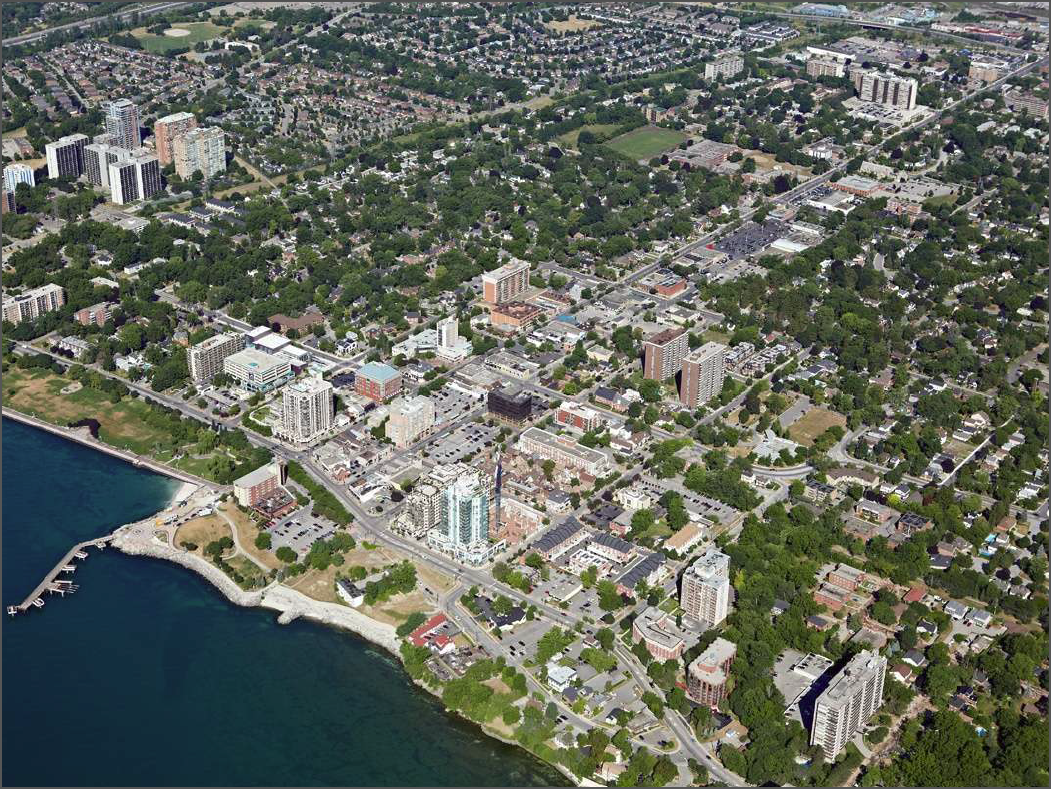 How much of the Burlington that people want to keep will make it through the Ontario Land Tribunal where developers are looking for heights above the 25 storey level. There is considerable doubt that this will happen.
Member is the title of the person presiding over a hearing. On occasion a Member may “seize” a case which means they are the presiding member every time the appeal is heard.
On most occasions the presiding member is whoever is available.
Counsel for the city and an assistant city solicitor balked at having to go through 54 pages of issues that are part of the ongoing appeals. There are two sets of appeals; those appealing the Interim Control Bylaw that was put in place two years ago and the appeals against the new adopted but not yet in force Official Plan.
Two examples of issues are set out below:
 This was an early version of the thinking coming out of the Planning department for the Waterfront Hotel site more than five years ago. A serious loss at the Tribunal might permit something like this. Vrancorp asked:
5. Does the revised Downtown Urban Growth Centre (the “UGC”) boundary identified in the New OP conform to the direction of the provincialGrowth Plan (2019) and the mapping provided by the Province, as required by section 3(5) of the Planning Act?
6. Does the revised Downtown Burlington UGC boundary identified in the New OP conform to the direction of the Halton Region Official Plan (1995) and related mapping?
 The developer offered to keep the Carriage Gate restaurant in place – believing it would be seen as a plus by the public. Another example asked by Core FSC Lakeshore GP Incorporated, the developer who wants to put up a 25 + storey development in the football shaped space between Lakeshore Road and Old Lakeshore Road.
8. Are the policies establishing maximum heights, densities, stepbacks, setbacks, view corridors, transitions, dedication requirements, environmental policies, separation distances for tall buildings, and other performance standards in the Old Lakeshore Precinct:
a. excessively rigid and contrary to the Growth Plan (2019), the Provincial Policy Statement (2020), and fail to give regard to matters of provincial interest?
b. incorporate and impose guidelines, policy and study requirements that have either not received final approval or which represent an overstep of the City’s authority to administer these requirements?
c. have appropriate regard for the amount of parkland that the City can require to be dedicated as set out in the Planning Act, and are these policies ultra vires Section 42 of the Planning Act?
d. given an adequate review or consideration by the City before adoption?
e. Is it appropriate for the City to pass off its study of these policies to applicants?
These are not minor matters – the decision that will eventually be made by the OLT will be determined by how strong the city case is.
So far the city and the Region are looking irresponsible and showing little regard for the timelines and requirement to deliver information in a reasonable amount of time.
The city has to answer the questions and there are hundreds of them.
The city and region were supposed to provide a consolidated list of issues related to the new Official Plan by July 23rd, but they failed to do so. In the Case Management Conference meeting held last Wednesday morning City and Regional staff said it simply was not possible to meet the July 23rd deadline.
The list of consolidated issues is now expected on September 8th and will be discussed at the next case management conference in October, a timeframe the Member deemed relatively expeditious – not everyone saw it that way.
The city had offered to lift portions of the Interim Control Bylaw that had been put in place – that bylaw effectively put a hard stop to any progress on the numerous development applications that had been filed with the city planning department that were within the proposed new Urban Growth centre boundary.
The bylaw froze everything for one year with the option to extend the freeze for an additional year.
The city then took the position that they could not lift the freeze until all the appeals related to that Interim by law were resolved.
At the Wednesday meeting the city said it was prepared to lift the freeze on some of the development projects.
Much of the disagreement was about the delay in bringing the ICBL before the tribunal for appeal. The current interim control by-law “freezes” development around the MTSA (Major Transit Service Area) and within the Urban Growth Centre (UGC).
The old, and currently in force, UGC was focused on the downtown core.
The new UGC is focused on the Burlington GO station area.
The profits on development around the GO station are not as rich as those in the Caroline down to Lakeshore Road part of the city.
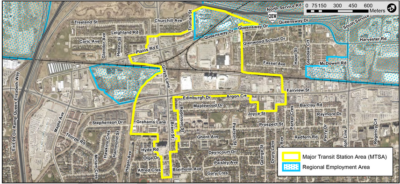 The Urban Growth Centre boundary is now much further north than it was when the 2014-18 Council changed the Official Plan. For their part the city’s legal counsel said they would work toward lifting the freeze on areas unaffected by the new zoning by-laws, they expected this to please the developers – this also proved unsatisfactory.
Counsel for West End Home Builders Association (WEHBA) Denise Baker said the appeals process keeps getting “punted down the road.”
Representatives challenged the city’s suggestion of lifting the freeze as vague, lacking substance and a time frame.
Baker was critical of the city failing to schedule a hearing on interim control by-laws.
 The ADI Nautique development got approved when a lawyer managed make a link between a bus terminal and the kind of development that was needed. Denise Baker, some will recall, was counsel for the ADI Development Group when they appealed the decision on the property at Lakeshore and Martha Street where a 26 storey tower is in the process of going up.
Baker was brilliant when she argued that the bus terminal on John Street was an MTSA – which is the designation it had been given even though it is a room that wouldn’t hold 10 people.
The presiding member at the hearing bought the argument and that was enough to approve the ADI development even though they were asking for height on Lakeshore the city had never seen before.
Baker argued on Wednesday that: “At some point, we have a right to have a hearing on the appeals that have now been outstanding for an extended period of time.
She added that “It is absolutely within the tribunal’s jurisdiction to schedule hearings. The “only two months” was part of the ruling on January 14th, and the “only three months” was part of the ruling on April 26th to get to the August 4th date was just not acceptable to Baker who didn’t want to settle for another “only two more months” when it will be dealt with expeditiously.
“ I don’t have a commitment from the city that they will in fact be bringing such a motion” said Baker who added: “They just said they received some instructions to lift the freeze, but no commitment on how they are going to do it or when they’re going to do it.”
The OLT met largely to determine if all the matters the ICBL and the new Official Plan would be heard together. The best that came out of the meeting to push to get the city asnd the Region to get a wiggle on and produce a document that consolidates the 70 pages of concerns and complaints from the development community that is necessary before the actual hearings can begin.
Whenever the hearings do take place it will be quite a zoo if it has to take place virtually.
Burlington has always claimed that it seldom got a fair shake at these tribunal hearings.
The failure to meet deadlines and to move the files forward is not helping.
With Council on a six week vacation there has been no word from the Mayor, who is usually quick to make a comment through at least one of her 17 communication platforms.
One has to wonder as well if there are conversations between the City Manager Tim Commisso and the City Solicitor on just what the problem is.
Ryan O’Dowd is a Sheridan College journalism student who is part of a federally funded Local Journalism Initiative that will have him reporting for the Gazette well into 2022. He is a Burlington native who plays the guitar.

 By Maddy Van Clieaf: Local Journalism Initiative reporter By Maddy Van Clieaf: Local Journalism Initiative reporter
August 8th, 2021
BURLINGTON, ON
Folk music and magical ambiance charmed the Rock Garden at the Royal Botanical Garden’s Enchanted Garden Tour this weekend.
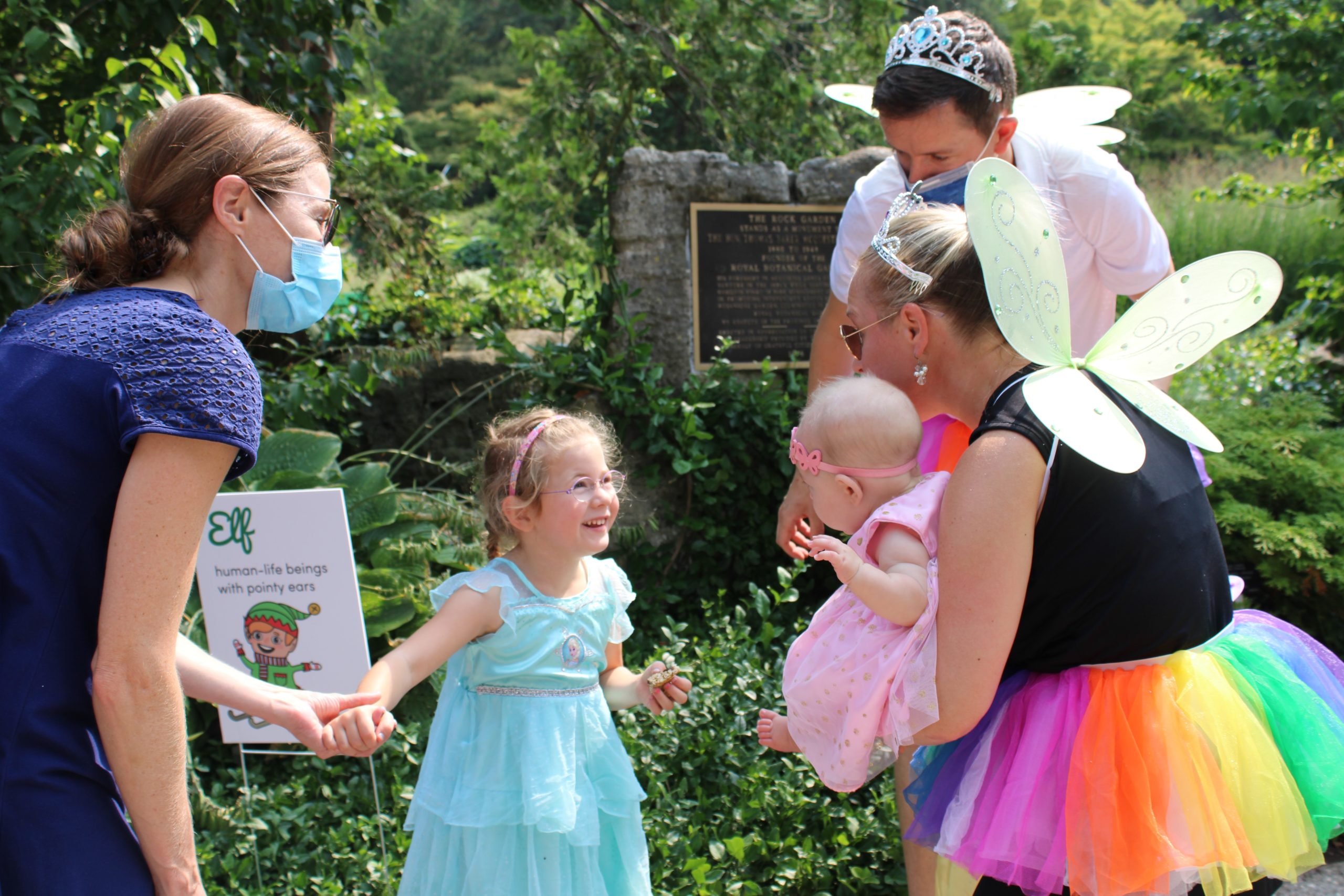 The girl in the blue dress is named Claire, she is 5. The baby is also named Claire, she is 5months. Parents and Grandparents watched on as the kids, clad in fairy wings and big smiles, learned about the monarch butterfly life cycle from different “magical beings.”
The Enchanted Garden Tour, a full kilometer long, leading through the Rock Gardens and hosting six different stations for kids to learn about this year’s theme, the monarch butterfly.
 Five year old Dahlia reaches for a Monarch butterfly. As described by one of the staff members, the monarch theme is meant to symbolize transformation and adaption, a fitting theme for a year of constant change.
The kids participated in interactive activities led by the “magical beings” at each station and filled in their complimentary colouring books.
 Juliette is 2. At the end of the tour, they were gifted a “Monarch Guardian” pin to signal their newfound butterfly knowledge.
The event took place in the Rock Garden on 1185 York Boulevard, Hamilton ON where the gnomes, elves, fairies, pixies, and sprites who make the Rock Garden home couldn’t be seen – but they were there.
The historic Rock Garden is considered the birthplace of Royal Botanical Gardens. Following a significant rejuvenation, the Rock Garden reopened in 2016 to embrace sustainable trends in garden design and management while respecting the integrity of its heritage setting. Bold swaths of brilliant perennials provide sweeps of inspiring colour and texture throughout all seasons.
Maddy Van Clieaf is a second year journalism student at Carleton University. She is with the Gazette as part of the federal governments Local Journalism initiative.

 By Pepper Parr By Pepper Parr
August 7th, 2021
BURLINGTON, ON
There are public hearings taking place at the Ontario Land Tribunal.
Before a full hearing can take place what are known as Case Management Conferences are held that set up the data and sworn statements that will become part of the actual hearing.
At this point in time there are appeals to the ICBL (Interim Control Bylaw) that shut down development in parts of the city for more than two years and the Approved but not in force city Official Plan.
The creation of a new Official Plan is a big deal – the changes the council elected in 2018 put in place were hugely different than the plan the 2014-2018 Council approved.
There are major dollars on the table – opportunities for eye popping profits for the developers and buildings that will change the look, feel and character of the city for decades.
Many people don’t pay all that much attention to these matters – they often don’t understand what is really complex stuff and wonder what difference their voice would make.
Then when they see a 26 storey tower that comes right out to the property line leaving them feel like they are in downtown Toronto they ask: How did this happen?
The picture below is a look at what it at stake.
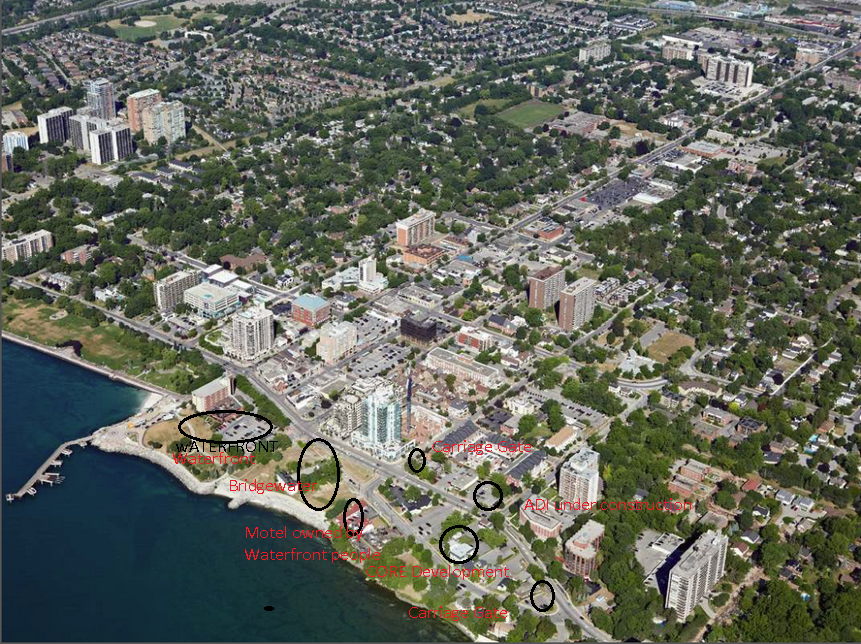 The cultural and historical heart of the city has been bought up by developers who want to put up high rise towers reach close close to 30 storeys. Each circle represents a development underway of property on which a development application has been filed.

 By Staff By Staff
August 7th, 2021
BURLINGTON, ON
The West Nile Virus has returned to the Region and chosen to make a home for itself in Burlington.
A batch of mosquitoes trapped this week in Burlington has tested positive for West Nile virus (WNV). This is the first batch of WNV positive mosquitoes for Halton this year.
“Halton is committed to reducing West Nile virus in our communities through both education and preventative programs like larviciding,” said Dr. Hamidah Meghani, Halton Region Medical Officer of Health. “Until the hard frosts of fall set in, Halton residents should continue to protect themselves against mosquito bites and remove mosquito breeding sites.”
 The West Nile virus is now in the Burlington area – precautions are not hard to handle. Urban areas are more likely to have mosquitoes that carry WNV. The types of mosquitoes that transmit WNV to humans most commonly breed in urban areas such as bird baths, plant pots, old toys, and tires that hold water.
Residents can take the following steps to protect themselves and their families from mosquitoes:
- Cover up. Wear light-coloured, long-sleeved shirts and pants with tightly-woven fabric.
- Avoid being outdoors from early evening to morning when mosquitoes are most active and likely to bite, as well as at any time in shady, wooded areas.
- Reduce mosquito breeding sites around your home by getting rid of all water-filled containers and objects, where possible. Change the water in bird baths at least once per week.
- Use an approved insect repellent, such as one containing DEET or Icaridin.
- Make sure your window and door screens are tight and without holes, cuts or other openings.
Locations of standing water sites that have had larvicide applied this year are available on the West Nile Virus page on halton.ca.
|
|
|
| The Regional Municipality of Halton serves more than 595,000 residents in the City of Burlington, the Town of Halton Hills, the Town of Milton, and the Town of Oakville. Halton Region is committed to meeting the needs of its residents through the delivery of cost-effective, quality programs and services, including water and wastewater; Regional roads and planning; paramedic services; waste management; public health; social assistance; children’s and seniors’ services; housing services; heritage programs; emergency management and economic development. For more information, call 311 or visit Halton Region’s website at halton.ca. |
|
|

 By Staff By Staff
August 6th, 2021
BURLINGTON, ON
There has been a sudden jump in the number of new Covid19 infections.
 The impact the variances have had is very evident. They are what will create a 4th wave. Not a severe jump – but a jump nevertheless.
 People who are very vulnerable have been hardest hit – that happens when the virus gets out into the public realm. This is our fight to lose. A look at the chart shows the impacts the variants are having – and new variants are being found.
Being sensibly reasonable and asking those you come into contact with if they have been vaccinated – and if they haven’t, remove them from your circle.
They might object but the health of everyone depends on everyone doing what we know works.

 By Staff By Staff
August 6th, 2021
BURLINGTON, ON
Chad MacDonald has a big pair of shoes to fill. He was appointed today as the City’s new Chief Information Officer (CIO) starting on Tuesday, September 7, replacing Christine Swenor, who retired in June.
Swenor grew the information technology side of city operations that change massively the way staff have access to huge amounts of data that can be brought to their desk tops.
MacDonald has over 25 years of private and public-sector experience in information technology, telecommunications, and innovation.
He was the acting Chief Information Officer with the City of Halifax and was responsible for enterprise-wide IT strategy, operations, and investments. During this period, he oversaw the implementation of many organizational improvements and enhancements including Enterprise Resource Planning and Identity Management systems and the implementation of customer centric design and user experience practices, data governance and an organizational maturity model.
Chad also spent 15 years working for the Province of Nova Scotia. During this time, as a director, he was responsible for the delivery of projects in the areas of Business Registry, Registry of Motor Vehicles, Vital Statistics and Permits and Licensing. Other responsibilities included leading the Portfolio and Project Management Office which was accountable for all IT delivery and management of cloud services.
For the past 3 years, he has served as Director of Strategic Planning and Delivery and
Chad is a graduate of the Master of Business Administration from Athabasca University and is a certified Project Management Professional.
Chad MacDonald is the second recruit Burlington has poached from Halifax. Kevin Arjoon, the City Clerk also came out of Halifax.
Amongst the people MacDonald communicates with at the social media level are the Mayor of Burlington – this appointment was critical for the Mayor.

 By Mark Gillies By Mark Gillies
January 18, 2015
BURLINGTON, ON
Burlington is using the month of August to celebrate local history. Sometime ago the Gazette published a series of articles by Mark Gillies, a lifelong Burlingtonian. It is appropriate to re-publish the stories about the people who built this city.
A Burlington History Maker, Like No Other
His name was Lee Joseph Smith, another outstanding citizen of Burlington, and just like Spencer Smith, this individual also made a huge impact on why so many of us choose to live here. What did this man do? As in so many cases with Burlington’s history makers, they have not been properly recognized.
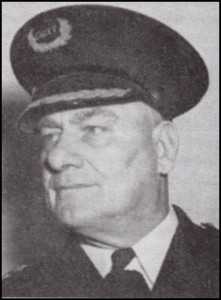 Chief Lee Joseph Smith, (1885 – 1973). Was this man Canada’s greatest Police Chief ever? Most residents will not know his name, or at best, barely remember who Lee Smith was, but by the time you finish reading this four part feature, you will better understand this man’s contributions to the safety and protection of our local society. This is for you Lee. This is your story.
Farm Boy joins The Northwest Mounted Police
Lee was born July 26, 1885 in London, Ontario, but spent most of his boyhood years growing up on the family’s market garden farm in Saltfleet Township, which is the Stoney Creek area of Wentworth County. When Lee was 21 years of age, in 1906, he made a decision that was about to change his life, and not knowing it at the time, this same decision would eventually affect the residents of Burlington, even to this day.
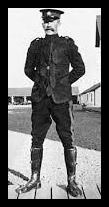 Here is a typical Northwest Mounted Police officer in full dress uniform around 1911. Lee would have worn a “Mountie” uniform exactly like this one, and then climb onto his horse and head out on patrol. His decision was to serve the public in law enforcement. Lee joined the Northwest Mounted Police, where they promptly sent him out west, where Lee patrolled on horseback throughout the wild desolate prairie lands of Alberta, only 1 year into becoming a province.
Later, Lee transferred to the Brandon, Manitoba detachment as a result of his outstanding service, having been promoted to detective. When Police Commissioner Aylesworth Bowen Perry introduced annual training classes, Lee was selected as one of his first instructors. No doubt about it, Lee Smith was a good as it gets; a rising star who undoubtedly was destined to one day become a future Commissioner of the Royal Canadian Mounted Police. Officer Smith while out west had some skirmishes and even took a few bullets, fired upon by local rowdies, but the young man survived, and continued to serve faithfully, and grow as a highly respected police officer.
Boy meets Girl
While posted to the Brandon detachment, Lee met his future wife to be. Her name was Alma Edith Mackenzie a lovely young lady from Woodstock, New Brunswick. Alma was a student studying at the Brandon Baptist College. When Alma was 21 years old, she and Lee tied the knot in Brandon on September 27, 1911. The newly wedded couple lived and worked in Brandon until 1914, when personal tragedy struck back home in Ontario.
Lee, after serving with the Mounties for eight rugged years, felt it best if he resigned, and return to his home area of Hamilton with his bride Alma, after receiving the tragic news his younger sister Annie Katherine, at the age of 26, had died on May 17, 1914, from tuberculosis. Annie had painfully suffered for several years with the dreaded disease. The family was grief stricken. Lee, a compassionate man, felt he had completely let his family down with his long absence from home, and racked with guilt, now wanted to be closer to his family, especially at this very difficult and sad time. Home for good, Lee needed to find work as soon as possible. Then he heard about a possible opening as a constable in Burlington.
Lee Smith finds employment in Burlington as a Night Constable
Lee was hired as a replacement night constable a few weeks after his sister’s death in the spring of 1914. Burlington, at that time, had a population of around 2,000 people during World War 1. Most of the young men from town and the surrounding farms had already gone off to war. If you think about it, if about half the population were children, and ½ of the adults were female, this only leaves 500 adult men in town. Burlington did its part, and we sent 300 over to Europe. Only 200 elderly men remained behind. Who was going to keep us safe? The Town Council had recently gone through a series of unsuccessful attempts to hire other men who did not work out to be the kind of Burlington police officer they wanted patrolling the streets after dark.
Lee Smith’s interview was impressive, and Lee was selected to be their new man of law and order. Lee continued to be exceptional at police work putting his Northwest Mounted Police training to good use. Sometime in 1916 Burlington’s first Chief Constable, Charles Tufgar, 36, who lived on Ontario Street, unexpectedly resigned. Lee Smith, without any hesitation by Town Council was promoted to Burlington’s Chief Constable. Town Council wanted to make sure their “all-star officer” didn’t one day suddenly resign, with ambitions to move up the ladder with another police department. As it was, Lee was not about to leave. The Chief strongly believed in loyalty to the Mayor, the Town Council, and the residents of Burlington he served. The truth was Lee and Alma loved Burlington.
The new Chief delivers his first report to Town Council
It was the duty of the Police Chief to provide the Town Council with an annual update of the activities and concerns of the Police Department during the first week of January. In the Chief’s first report in 1917, he acknowledged the resignation of Chief Charles Tufgar, and he also informed the town’s Council they were without the services of a night constable.
The Chief reported that in 1916 there were 475 cases that went to Court. During that same year, the Chief had found 43 doors were unlocked, and advised those residents to have them secured. The Chief reported that Burlington had 5 fires, and 24 accidents were attended. There were two cases of aggravated assault, 76 overnight lodgers, three house break ins, two charges of abusive language, 14 thefts, four common assaults, 12 disorderly conducts, 11 vagrancy charges, 1 trespassing charge, two stolen horses, 49 warnings issued for small offences, 161 local complaints received and investigated, three charges of residents not having a proper license, five charges of riding a bicycle on the sidewalk, three charges of property damage, 3 cruelty to animal charges, one charge for not having sleigh bells, 286 aliens were registered, seven charges laid for being an alien enemy, 14 charges for drunkenness and breach of the OTA, and seven charges laid for breach of the Motor Vehicle Act.
There were 11 arrests outside of points. The Chief also reported that 29 children had not attended school and the parents had been contacted. A total of $1206.20 in fines was collected. Visitations to the two pool rooms and the moving picture theatre were deemed satisfactory and managed properly. The Chief was referring to Burlington’s new Crystal Theatre located on Brant Street, opposite Ontario Street.
The following year in June 1918, the Crystal Theatre featured the two classic blockbuster silent films, “Birth of a Nation” and “Intolerance”, complete with an in-house orchestra. The Chief concluded by saying, “I highly appreciate the valuable assistance given me by Mayor and Council, also that of the Special Constables and other Town officials during the year.” No doubt about it, the Chief had a very busy year in 1916.
The Chief expands his Police Department & hires more officers
When Lee Smith became Chief Constable, he was responsible for additional duties other than police work. It was also Lee’s job to do all the janitorial duties, such as washing windows, sweeping the floor, cleaning washrooms, and to do minor repairs around the municipal office. Lee was receiving $17.80 each week, and that was after his raise, when he was promoted to Chief. This was thought to be good pay back then.
One day, the Town Council under the leadership of Mayor Maxwell Smith, himself a man of great vision, innovation and entrepreneurship, decided that Lee could use some help as the town tried to modernize, so later that year in 1916 Town Council presented Lee with a telephone for his office, something long overdue, since telephones had been in use since their invention around 1877, almost 40 years earlier.
That wasn’t all that changed for the better. The following year in 1917, affable Bert Dunham was hired as a special constable, and it was decided Bert was to work every other Sunday for $2.00 a day. Bert and his wife Ida who had seven young children were living in a very small house at the corner of Pine and Elizabeth Street; and for the Dunham family, this new source of money was greatly welcomed. Lee knew that Bert needed the extra money and this was his way of helping out when he hired Bert for the job.
One thing about Lee J Smith, he really knew people. Bert was grateful for the work, and he wasn’t going to let the compassionate Chief down. Now, Lee was no longer on call seven days a week, but still came pretty close to around the clock duty. Lee not only worked days, but he also worked nights, and it was decided another constable was needed for the still vacant night shift.
Allan Mitchell, a Scottish born family man who was about 50 years old, also could use another job, after hitting some tough times, and like Bert, Allan could use the extra money to augment his irregular income. The Chief puzzled over how Allan would labour during the day with his various odd jobs, and then still work all night. Regardless of how Allan was going to make it work, he was hired as a night constable by Chief Smith, and this brought about some more badly needed relief for this completely overworked Police Chief.
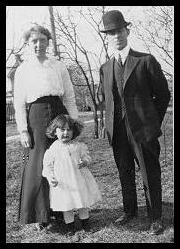 Here is a very dapper Adolphus Smith sporting a fashionable bowler hat, with his wife Susan and daughter Annie around 1918 at their home 2091 Maria Street, near the corner of Martha Street. Doll, as he was known, was the older brother of Chief Smith, and Burlington’s first motorcycle officer. A Police motorcycle, automobile accidents & possible nepotism
The Burlington Police Department grew to 4 officers in late 1919 when Chief Smith hired his older brother Adolphus as a new Burlington police officer. Adolphus was better known by everyone as “Doll”. During World War 1, fighting against Germany, Adolphus was probably not the best name to be known by, so Doll thought this shortened version of his name worked better. Doll Smith, a woodworker by trade was working at a munitions plant in Hamilton during World War 1.
 This accident occurred on the Lakeshore when the driver was heading towards Bronte. The impact was severe enough to snap the power line pole. When the war ended, Doll who was married, with a young daughter to raise, was soon to face unemployment and began looking for work. As it turned out, Chief Smith, a man with uncanny vision, had been thinking of a way to patrol the Lakeshore Road area. This road was becoming busier all the time, now that automobiles were becoming more prevalent, and wouldn’t you just know it, automobile accidents were starting to happen, a new phenomenon for the department. The population had increased to close to 2700 people. The population was getting close to a 50% increase over wartime numbers in town. Chief Smith, with virtually no real budget to work with managed to locate a free motorcycle for his department.
The Chief discovered that British World War 1 surplus motorcycles under the Imperial Gift plan, a program set up for all Members of the British Commonwealth to receive some of Britain’s military surplus, on a ruling established by the British Parliament on June 4, 1919 was put into effect. Chief Smith was elated and quickly sent in his application for one slightly used battle scarred motorcycle. When the machine arrived later that year, Constable Smith was assigned as Burlington’s first motorcycle officer.
 Chief Smith secured a war surplus motorcycle similar to this 1918 Matchless, and assigned his brother to patrol the busy Lakeshore Road, the main thoroughfare for automobiles, trucks, carriages, wagons, bicyclists and pedestrians between Toronto and Hamilton from 1919 to 1930. Doll patrolled the Lakeshore Road all the way to Toronto and back. Either Doll was hooked on riding a motorcycle, or he thought Burlington was far bigger than it actually was; whatever the reason, this is what Doll did for a few years. Doll left the department in the late 1920s to ride for the Ontario Highway Patrol, and in 1930 he moved over to the Ontario Provincial Police, when they hired 70 constables to begin their own motorcycle division. Doll was one of the OPP’s first motorcycle officers hired, and remained an OPP motorcycle officer patrolling Highways 8 and 20, right through to the Niagara area, until his retirement in 1950.
What about the nepotism? It wasn’t to be a problem. Not many people in that day could even drive an automobile, and far less could operate a motorcycle. Adolphus Smith already new how to ride, or so he claimed. Doll just happened to be in the right place at the right time. Adolphus Smith passed away in 1975 at 92 years of age.
The Ontario Temperance Act
Just when Lee Smith received his promotion to Chief, Ontario went bone dry in 1916. The Ontario Temperance Act (OTA) was enacted and this new law, designed with good intentions, prohibited alcohol sales. The OTA was in force until the Act was repealed in 1927. Needless to say, the Chief and his three officers were kept busy trying to enforce this unpopular law. Quite possibly, Chief Tufgar may have been provoked into his resignation over opposition to this legislation. The Temperance Act was that controversial.
The story of Burlington’s most famous Chief of Police was told in for parts. The Gazette is re-publishing parts 1 and 4. Links to parts 2 and 3 are linked below.
Part 2
Part 3

 By Staff By Staff
August 4th, 2021
BURLINGTON, ON
The Ontario Land Tribunal held a Case Management Conference this morning that lasted just a little over an hour.
They didn’t get all that much done.
 The City and the Region were required to provide time frames and firm commitments so that the 40+ appeals of the city’s adopted but not in force Official Plan could proceed. The City and the Region were required to provide time frames and firm commitments so that the 40+ appeals of the city’s adopted but not in force Official Plan could proceed.
Representatives from the city and the Region were supposed to provide a consolidated list of issues related to the appeals to the new official plan by July 23rd, they failed to provide this.
 The city’s legal team expressed surprise at the 54 pages of issues received, adding it simply was not possible to meet the deadline. The city’s legal team expressed surprise at the 54 pages of issues received, adding it simply was not possible to meet the deadline.
The list of consolidated issues is now expected to be ready by the 8th of September and will be discussed at the next Case Management Conference in October;, a time-frame the Commissioner hearing the appeals said seemed relatively expeditious- not everyone saw it that way.
Denise Baker, representing the former Hamilton Halton Home Builders Association suggested the city was “punting” this matter down the road.
The city’s legal counsel said they would work toward lifting the Interim Control Bylaw on areas unaffected by the new zoning by-laws, they expected this to content parties – this also proved unsatisfactory.
Representatives challenged the promise to lift the freeze as vague, ambiguous, and without a time frame.
More later today on this breaking story.

 By Staff By Staff
August 4th, 2021
BURLINGTON, ON
When there is construction work being done within hearing distance from where you sleep – you end up being a very unhappy camper.
Some time ago the city created a policy – Construction and Mobility Management Policy, to address the issue.
 In the past the city has held public meetings and asked the developer of a site to explain to the audience how they will manage the CMMP. Those stand are from the ADI Development Group. The contractors had to submit a plan on how they were going to handle the movement of equipment and construction materials to the site and how they would manage the movement of pedestrian and vehicular traffic around the site.
For the people on Martha Street near Lakeshore a Construction and Mobility Management plan hasn’t made much difference – what has lessened the quality of their lives is the provincial policy that lets workers start at 7 am.
Nothing the city can do about provincial policies – except to maybe write a tart letter.
The city now wants feedback to help refine the policy to address construction impacts on sidewalks, cycling facilities, parking and streets.
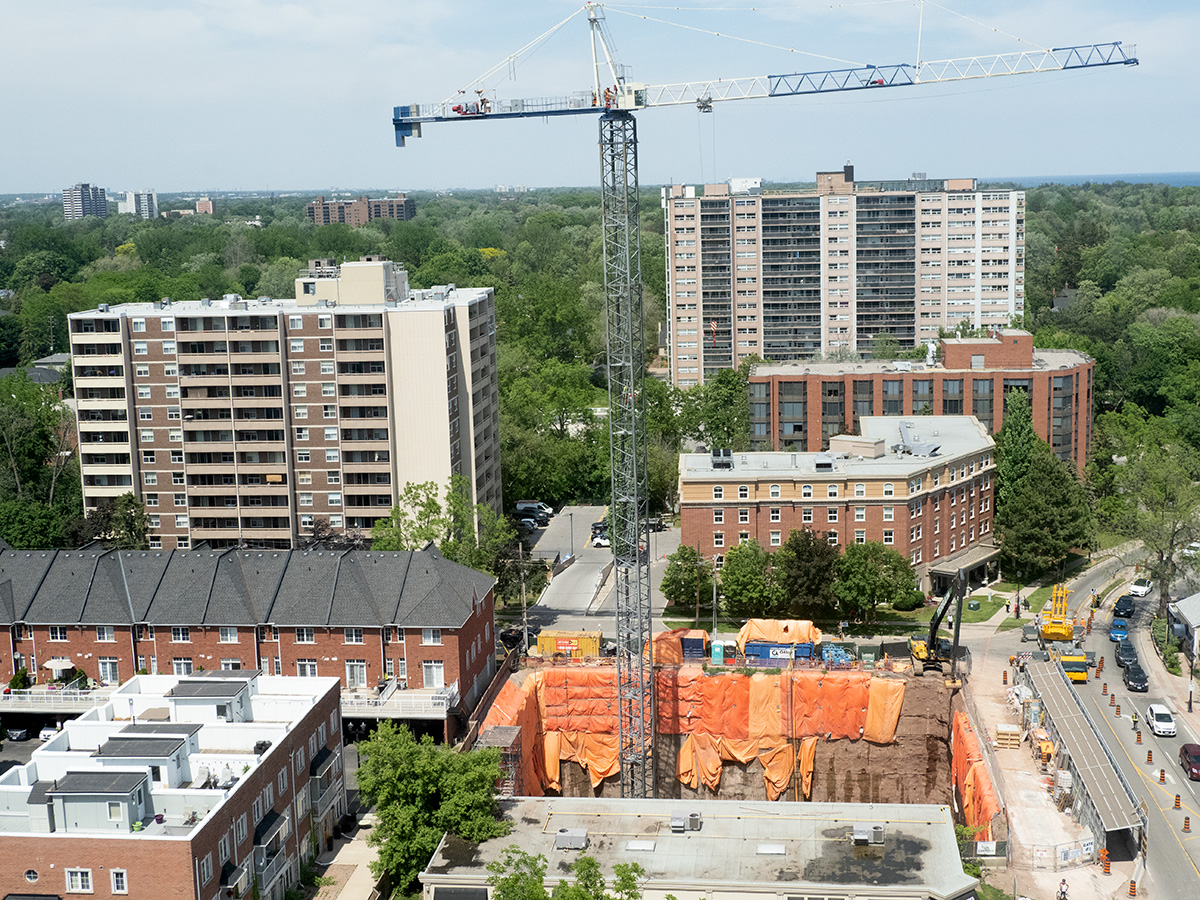 This aerial view of the Nautique construction site sets out the problem; the traffic limitations on a very bust road, the sound and construction dust problems. The Construction and Mobility Management Policy, (CMMP) first approved by Council in the fall of 2019 provides guidelines to:
• Minimize impacts to sidewalks, cycling lanes, parking and streets during construction of new developments;
• Provide consistency in the City’s review and approval of proposed developments;
 The Nautique: it was controversial when it was an idea. Some things never change. • Successfully manage multiple developments, potentially in close proximity, while maintaining an active city for residents and businesses; and
• Coordinate private development with planned construction by the City, Halton Region and Utility companies on public roads.
In June 2020, staff proposed an amendment to the original Construction and Mobility Management Policy to establish additional guidelines for the approval and management of low-density residential construction activities, to minimize impacts to public health and safety, amenities, traffic and the environment in the area. Council approved this amendment on June 22, 2020.
Staff is now looking for feedback from residents about how construction has impacted them both before and after the City implemented the CMMP.
How to Participate
Residents and others interested in the Construction and Mobility Management Policy are encouraged to:
1. Visit GetInvolvedBurlington.ca/CMMP to learn more about the policy
2. Take the survey
An online survey will be available until Aug. 27, 2021 at GetInvolvedBurlington.ca/CMMP for residents to share input about how the policy has affected construction around Burlington to date and what the future of the policy might look like.
You might want to use the Gazette search engine to pull up past stories on construction site problems.

 By Mark Gillies By Mark Gillies
January 15, 2015
BURLINGTON, ON
Burlington is using the month of August to celebrate local history. Sometime ago the Gazette published a series of articles by Mark Gillies, a lifelong Burlingtonian. It is appropriate to re-publish the stories about the people who built this city. This is part two of the Spencer Smith story.
Spencer Smith got to Canada as part of the immigration of British children into Canada and Australia. The children were shipped from England by well meaning people but there were some horrific abuses and I believe it is necessary to expand the Spencer Smith story and learn more about how these boys who, without their consent became indentured servants. They were referred to as “Home Children”.
The poem Spencer Smith wrote, it was included in part 1, aches with the longings of a man who missed so much of a natural childhood.
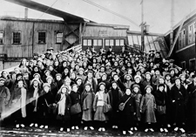 Home children on a dock in St. John NB – waiting for trains to take them east. The concept of Home Children started with honourable intentions; with good people trying to salvage young children from a parent-less home, or incredible poverty. Relocate them to a better life in Canada or Australia, that’s all they had to do. What’s the problem with that?
What made the idea work, was that farmers in Canada and Australia faced a severe labour shortage. They had recently immigrated themselves from Europe, cleared their fields, and grew their crops. Only problem was, who was going to do the harvesting, tend to the fields, feed the animals, and everything else that farmers do in this difficult labour intensive profession?
They didn’t have anybody to help. Governments were perplexed as well; those in Canada and Australia were more than happy to bring in immigrants to open up land and create farms. Sometimes they even gave them free land and supplies, but governments overlooked one part of the equation. Who is going work these large farms? They desperately needed a solution, and quickly.
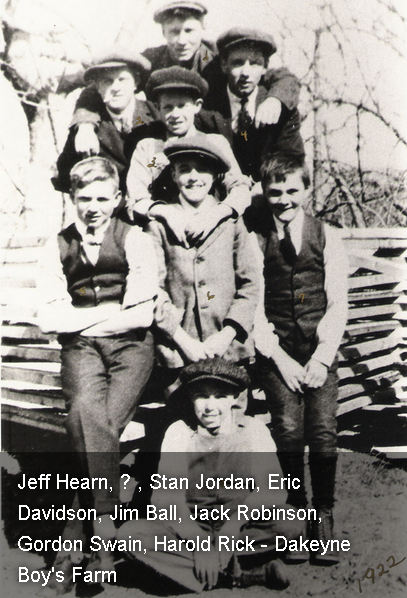 No doubt about it, everyone at the time believed this was a “WIN-WIN” situation. Spencer Smith’s story was a perfect example of one that seemed to have a happy ending. No doubt about it, everyone at the time believed this was a “WIN-WIN” situation. Spencer Smith’s story was a perfect example of one that seemed to have a happy ending.
Featherstone Martindale & Spencer Smith.
Spencer Smith’s sponsor was Featherstone Martindale from Caledonia. If you have ever been to Caledonia, it seems that about every third person you meet has the last name Martindale. They are a fantastic local family and they show up everywhere in Caledonia. Featherstone was born in 1848 in Haldimand County. Featherstone must not have been impressed by his first name, because he always went by the name Fred. He was a good honest man and a hardworking farmer who desperately needed help on his farm. Fred over the years became a father of 8 children and had married 3 times.
The Farmer’s Wife in Spencer’s Poem
In Spencer’s poem, he speaks of the farmer’s wife who influenced him. Spencer was referring to Eliza Mary Shult, who was Fred’s second wife. His first wife Eliza Jane Anderson died in 1881 after giving birth to a daughter named Ann. Fred married Eliza Mary Shult on January 8, 1883, and the new couple proceeded to have 7 children, the first born was Frederick who died in early 1884. Then another son named Featherstone was born in late 1884, and another 5 children were born between 1886 and 1895. In 2 quick years from 1883 to 1885 Eliza had married, and brought along her own small son named Wilfred McBride who was 5 years old from her previous marriage, when her first husband John McBride died from tuberculosis in 1879.
Spencer arrived on the farm May 21st, 1885 when Eliza Mary was just 28 years old. She was quite a busy young lady herself by the time he stepped down from the carriage. This young lady seems quite remarkable to me, since she still had some extra maternal time to still dote on young Spencer, something that helped shape his life.
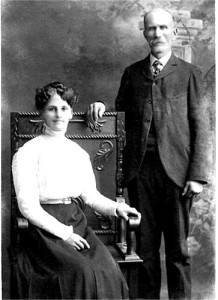 Eliza Mary Shult, the second wife of Featherstone Martindale had a huge influence on Spencer Smith, and he fondly recalls about her in his poem written in 1911. I’m sure old Fred would be quite crusty at times, and probably scared the lads half to death many more times, but Spencer’s poem has a softer edge to it, especially towards Eliza Mary. Eliza Mary died in 1895 from complications of the birth with her last child George Martindale. By this time, young Spencer had already left the Martindale farm. If Spencer actually stayed the full 3 years until he was 18, his servitude would come to an end in January 1888. After the death of Eliza Mary, Fred married a spinster named Margaret Anna Peart in 1907.
The Peart family in Caledonia, which is very large in number, just like the Martindale’s is somehow linked to the Peart family in Burlington, my guess is they are probably cousins. It’s only speculation, but the Jacob Peart farm in Burlington is on the land now occupied by Fortinos, Sears and Ikea, so maybe there was a connection for Spencer Smith to come to Burlington, especially if it was initiated through the Peart families in Caledonia and Burlington. The Peart farm was located directly across Plains Road from the Bell homestead. We’ll never know for sure, but we can at least think about it.
Spencer Smith was quite fortunate and did not face some of the severe hardships that other Home Children experienced. Far too many faced a certain hell of an existence.
The Truth about the British Home Children in Canada
Here’s what really happened to most of the British Home Children.
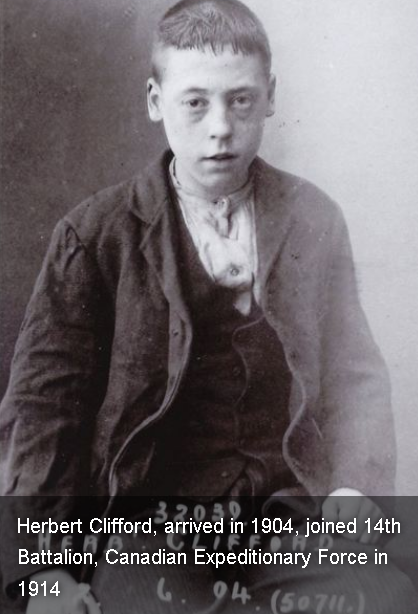 This became an economic issue more than anything else. It was strictly a case of supply and demand. Most of these organizations were faced with a huge demand. They had great difficulty in meeting the demand by farmers and governments in Canada and Australia. It was stated at one time that there were 10 applications for every child. So what were they going to do? The answer was simple. Start rounding up any child who potentially was wayward and lived in the area that was to be scoured for recruits. Overly simplified, absolutely, but not by much. This became an economic issue more than anything else. It was strictly a case of supply and demand. Most of these organizations were faced with a huge demand. They had great difficulty in meeting the demand by farmers and governments in Canada and Australia. It was stated at one time that there were 10 applications for every child. So what were they going to do? The answer was simple. Start rounding up any child who potentially was wayward and lived in the area that was to be scoured for recruits. Overly simplified, absolutely, but not by much.
The fact remains, that the original concept was for orphaned children. The reality was that only 2% were orphans. The rest were children in the wrong place at the wrong time. It’s true that during these times some parents had great economic problems, perhaps they were unemployed or seriously ill, and they had no choice but to hand over their children to a workhouse, or some other care facility until they could get back on their feet and then bring their children home. The truth is, these organizations to help meet the demand, decided to ship them overseas without their parents’ consent. Most of these children had no idea what was happening to them. The parents did not know either. The children never realized that they would never see their family again.
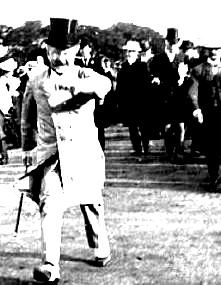 Dr. Thomas Barnardo was a very controversial character, and was responsible for exporting thousands and thousands of British children out of England and relocating them mainly in Australia and Canada. Here he is in 1905 leading the Founder’s Day Parade shortly before his death that same year. The largest organization was run under the management of its controversial founder Dr. Thomas Barnardo. He somehow convinced the Canadian and Australian Governments to take these children. Once that was established, then other organizations like the Shaftesbury Homes, the Salvation Army, churches, and others also jumped on the bandwagon. Probably, none of these add on organizations realized that down the road, this program was going to spiral way out of control, and thousands and thousands of small children were going to be totally exploited in this moneymaking scheme to supply cheap child labour to Canadian and Australian farmers. You can dress it up any way you want, citing testimonial cases that turned out good, reminding people that they were paid a small amount, some orphans were adopted by loving families, but in my opinion, the bare bones reality was: Canada, Australia and England were totally involved in a repulsive child slavery program.
Whatever happened to the other 32 boys who made the trip to Hamilton?
When I researched for information on the other 32 boys that made the trip to Canada with Spencer Smith, only about 2 boys continued to surface on available records. The Flamborough Historical Society has documented one of these Home Children. That boy went on to marriage, become a father and worked as a market garden farmer in Aldershot. He turned out okay.
Spencer Smith turned out okay. The others, they completely disappeared. We know some could have been adopted and had their surnames changed. As an outsider, it is basically impossible to track them. We already know that conditions for some children were so severe that they continually ran away from the farms they were working on, and many were beaten to a pulp when they were caught and returned. We know with documentation as proof that over two thirds of all the British Home children were beaten severely. We know that many of these children were not allowed to become part of the family that was caring for them. 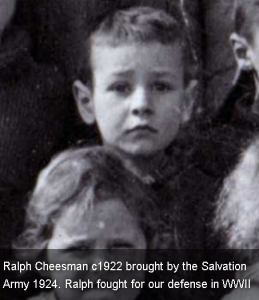 They were forced to live in exclusion on the farmer’s property, and not interact with the farmer’s own children or have any friends of their own. They were not loved or nurtured in any way. We know that they were constantly tormented and bullied by other children at local schools, and even adults participated in this human degradation of these children. We know that many just eventually disappeared. Where you ask? They were forced to live in exclusion on the farmer’s property, and not interact with the farmer’s own children or have any friends of their own. They were not loved or nurtured in any way. We know that they were constantly tormented and bullied by other children at local schools, and even adults participated in this human degradation of these children. We know that many just eventually disappeared. Where you ask?
My guess is some were probably murdered when they were beaten so severely by the farmers, and when authorities came around they just claimed that they ran away. Some children because of horrific living conditions probably became so ill, that they died on the farm, and were quietly buried on the property so as not to draw any suspicion. Others may have committed suicide, and became nothing more than John or Jane Does stashed away in a local morgue, waiting for no one to identify them. Whatever the reason, they’re gone, and we don’t know have explanations. Have a look at this story that appeared in the Saskatoon Star-Phoenix newspaper on April 23, 1930 about a young British Home Child boy named Arthur Godsall who was savagely beaten on a farm in Campbellford by farmer William Albert Hay, age 37.
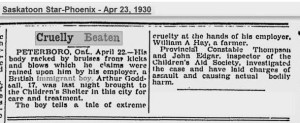 Albert had just arrived from England with many other British Home children and they all disembarked at Halifax from the ship Albertic on March 17, 1930. Albert had just arrived from England with many other British Home children and they all disembarked at Halifax from the ship Albertic on March 17, 1930.
Albert made his way to the Hay’s farm in Campbellford, and less than a month after he arrived he endured this beating and was finally rescued. That’s just one tragic story, there were thousands of stories just like this. One boy was forced to live outside in the dog house with the farm dog. The farmer fed the dog table scraps, and if the dog was full and if by chance there was any dog food left over, it was for the boy to scavenge. Not to mention that this same farmer viciously beat the boy almost daily. Eventually, he was removed from the farm, and as far as I know this farmer did not face any charges. This is unbelievable, but true. This happened in Canada. If you do some basic internet research, you will find these stories and many more.
What’s really disturbing is just how low profile this tragic event in human history was, and just how little we know of it now. But, it is becoming more widely known, and just recently as victims have finally come forward. In Australia for example, the Australian Government were finally brought to their knees by a public outcry after the public learned the truth from these victims, and the government brought forth an apology for their involvement in this hair-brained scheme. Also, the British Government were totally embarrassed by previous governments’ involvement in this tragic situation also came forth with an apology offered by then Prime Minister Gordon Brown. And what about the Canadian Government?
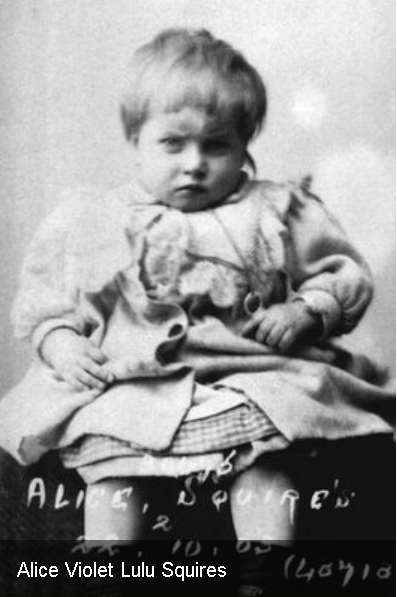 Where do we stand? Sadly, and unfortunately, the Canadian Government has essentially taken the position that this isn’t really a big deal, and no apology is warranted or forthcoming, even though they backed and encouraged this form of child slavery and abuse under the guise of helping disadvantaged children. Personally, I think that Jason Kenney the Cabinet Minister responsible for these remarks was not that well informed on the situation when confronted with the apology question, and consequently brushed it off as unimportant. I encourage you to contact Burlington’s local Federal Member of Parliament, Mr. Mike Wallace, who is a very decent man, and please voice your concern. I would like to think that Mike can champion this cause and help us get this apology from the Canadian Government. It’s long overdue, and it’s the right thing to do. Where do we stand? Sadly, and unfortunately, the Canadian Government has essentially taken the position that this isn’t really a big deal, and no apology is warranted or forthcoming, even though they backed and encouraged this form of child slavery and abuse under the guise of helping disadvantaged children. Personally, I think that Jason Kenney the Cabinet Minister responsible for these remarks was not that well informed on the situation when confronted with the apology question, and consequently brushed it off as unimportant. I encourage you to contact Burlington’s local Federal Member of Parliament, Mr. Mike Wallace, who is a very decent man, and please voice your concern. I would like to think that Mike can champion this cause and help us get this apology from the Canadian Government. It’s long overdue, and it’s the right thing to do.
Here’s how to reach Mike Wallace, Member of Parliament: Burlington Mall Office, 777 Guelph Line, Suite 209, Burlington, Ont. L7R 3N2. T: 905-639-5757 or F: 905-639-6031
House of Commons, East Block, Suite: 115, Ottawa, Ontario, K1A 0A6
T: (613) 995-0881; F: (613) 995-1091 or email, mike.wallace@parl.gc.ca
There is an incredible website on the British Home Children. https://canadianbritishhomechildren.weebly.com/
It tells the whole story of the plight of these exploited children. It will break your heart to read and watch some of the videos made by former Home Children, these men and women who are now elderly, who have finally broken their silence to tell the real story of what happened to them. The website also has a form that can be signed. It is a petition to persuade the Canadian Government to offer an apology to these unfortunate people, many still alive in Canada, and still suffering mental anguish.
Add the website to your “Favourites”. It is quite large and takes a fair bit of time to go through it properly, so you will likely have to go back several times. The website also is constantly updated with more unbelievable stories about this shameful part of our Canadian past.

 By Pepper Parr By Pepper Parr
August 3rd, 2021
BURLINGTON, ON
 Hassaan Basit, President and CEO of Conservation Halton Hassaan Basit, President and CEO of Conservation Halton said last week that from January until now, their parks have seen around 850,000 visitors, which is a 30 to 40 per cent increase from last year.
Someone is doing great business. People are getting out; something that is beginning to look like normal seems to be on the horizon.
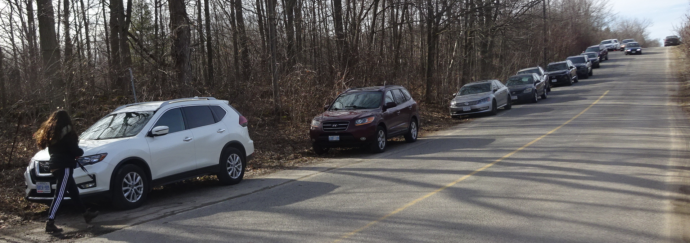 The line up of cars at some of the Conservation Authority parks takes space outside the grounds. 
 By Pepper Parr By Pepper Parr
August 3rd, 2021
BURLINGTON, ON
Reference is often made about the agricultural sector by the people who live in the Region. For most, the closest they get to any live stock is at the Royal Winter Fair.
For those in the Milton area there was an experience waiting for them.
A rogue cow had gotten loose.
Let the Regional Police tell that story:
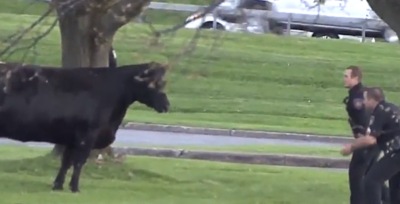 This is not a photo of the Halton Regional Police trying to coax a cow into getting back on the truck. It is a photo of what the police will be trying to do when they find the cow – not something they were taught at the police academy. Police are issuing a caution to motorists travelling in the south end of the Town of Milton. Late Friday night, livestock were being unloaded from a trailer when a rogue cow escaped handlers. She is described as a black 900 lb. cow. The handlers and officers are currently trying to locate the animal.
The loose animal is not contained and has access to open roadways. Extreme vigilance should be exercised if travelling in south rural Milton overnight and into Saturday morning.
Police caution drivers to be careful driving in the areas of Highway 25 (Regional Road 25) between Lower Base Line and Britannia Road, and on Britannia Road between First Line and Thompson Road.
You will know it if you bump into it.

 By Mark Gillies By Mark Gillies
February 2, 2015
BURLINGTON, ON
Burlington is using the month of August to celebrate local history. Sometime ago the Gazette published a series of articles by Mark Gillies, a lifelong Burlingtonian. It is appropriate to re-publish the stories about the people who built this city.
Would you like to know who I think was one of Burlington’s great business leaders of the early 20th century? Many great people who lived here before us, sacrificed much to help shape Burlington; in order for us to benefit from our beautiful surroundings today. As a local society, we have in far too many cases, turned our backs on these great citizens of Burlington. This is a real shame, and it doesn’t have to be this way.
As in my previous articles, most of the people I write about will be names that you do not recognize, and are now reading for the first time. These outstanding citizens of Burlington accomplished much locally, but have never been properly recognized. One such person is Henry “Harry” Lorimer.
Harry Lorimer moves up the ladder with The Grand Trunk Railway
Harry was born on the family farm in Norfolk County, February 8, 1861. By 1891, Harry left the family business and pursued a career with the Grand Trunk Railway in Norfolk County. Harry’s first job was a telegraph operator, then he became a Railway Agent assigned to a station in Norfolk County, where he perfected his skills, before receiving a promotion that was about to relocate Harry and his family to a more fast paced location, the Burlington Junction Station in Freeman.
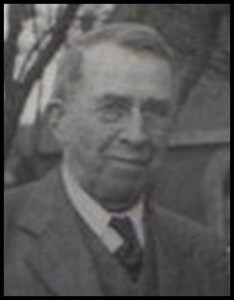 Harry Lorimer was the Burlington Junction Station Master in 1906 when it opened after fire destroyed the previous station in 1904. By 1897, Harry, his wife Seba, and daughter Gertrude were living in Freeman, and Harry was working as the Grand Trunk Railway Agent. It was very prestigious to be assigned as a Railway Agent to a Junction station. There was so much activity all of the time. Burlington Junction had double track lines running from Montreal right through to Chicago. Trains were travelling both ways. Then, the Grand Trunk Railway had another track running from the Niagara Region, across the Beach, through town, and up to Freeman where it crossed over the double tracks, continuing up to Georgetown, and then up to Allandale.
Burlington Junction also had freight warehouses, which were always busy with boxcars being loaded or unloaded. The responsibility and stress levels were extremely high for Harry Lorimer. The complicated schedules and logistics were unbelievable. Harry was lucky to have a telephone, some needed high tech assistance. The Station Master’s number was easy to remember. Who could forget “2”? Harry was the only Station Master for two different Freeman Stations. One burnt to the ground in 1904, and was replaced by another GTR station in 1906.
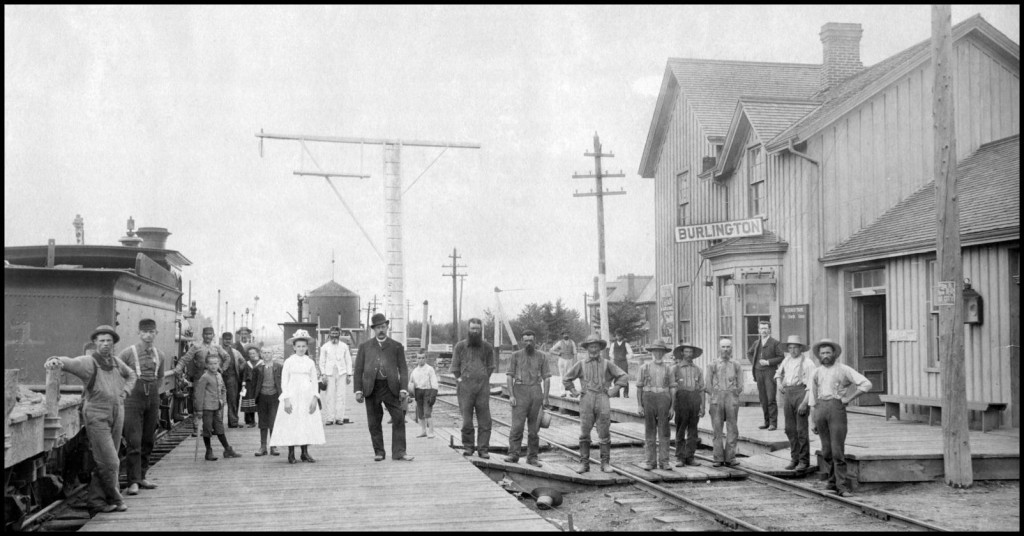 After a fire destroyed the original Great Western Railway train station in 1883, this second station was built by the Grand Trunk Railway, which also succumbed to a fire and was destroyed in 1904. Harry Lorimer was Station Master for both railway stations. 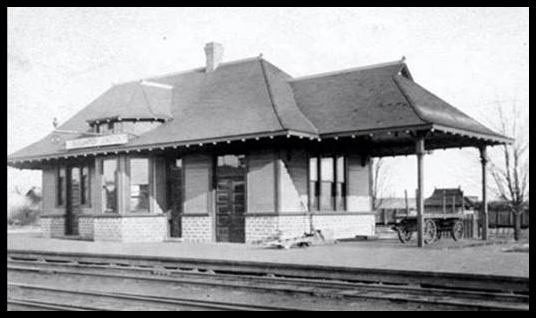 This is the historic 1906 Grand Trunk Railway Station photographed just after it had been built. The GTR identified the station as “Burlington Junction”. Our historic station was one of the busiest Junction stations in all of Canada. Now, thanks to the financial generosity of local citizens and businesses, this 109 year old historic building, owned by the City of Burlington, is in the process of restoration and has been permanently relocated to Fairview Street, west of Brant Street. The city owned 1906 historic station is now under restoration in a new location on Fairview Street, solely at the expense of private citizens and local businesses, who have come forward to save the station from demolition, as recommended by The City of Burlington. The City of Burlington at one time was to receive close to $1,000,000 in stimulus money to finance the relocation and restoration, but Burlington City Council, several years ago, were unsuccessful in agreement on a new suitable location. Subsequently the City of Burlington lost access to all of this stimulus money. Then, their solution to solve the problem on what to do with this magnificent old building, was a decision to have our heritage rich Freeman Station demolished, despite this being one of Burlington’s most historic buildings, and a huge part of Burlington’s colourful heritage. The citizens of Burlington were outraged at their thinking. Some on City Council still continued to fight to save our beloved Freeman Station and have been officially recognized for their outstanding efforts by the citizen organization, Friends of Freeman Station.
The Station Master was a highly respected citizen
The Station Master or Railway Agent in any town with a railway station was always a very influential and prominent citizen in their community. Railway Agents were very well respected, much like the clergy, police officers, doctors or lawyers. One of the reasons for this high level of respect was due to the fact that new families moving to Canada from Europe, arrived on the scene, and knew no one, often standing on the railway platform, suitcases in hand, and not knowing what to do, or where to go. The first person they saw and who offered to help them was the local Railway Agent. From meeting their first friend in Canada, new arrivals, one day, responded in kind. Often times, throughout Canada, the town’s highly respected Railway Agent also became the local Reeve or Mayor.
In 1901, Harry and his family were well entrenched into Burlington’s local community. Some of their good friends and neighbours were John Thomas Tuck and his family, plus the Ghent family, two very prominent local families. We’re all familiar with John T Tuck School on Spruce Avenue, and we all know where Ghent Avenue is located in Burlington. These two families have been recognized locally, but not so for Harry Lorimer.
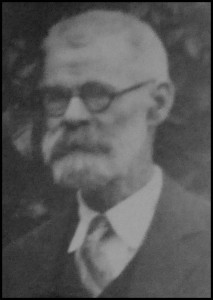 James S. Allen was the proprietor of Allen’s Hardware at the time it was sold to Harry Lorimer and Gordon Colton in 1912. James S. Allen was the nephew of George Allen, the previous owner, who then moved on to build prestigious homes in the core area of Burlington. James S. Allen, later became the Mayor of Burlington from 1925-1928. Harry Lorimer changes careers and Burlington wins again
In 1912, Harry, who was just 51 years old, made a career change. He became a hardware merchant and bought into an established business with his son-in-law, Gordon Colton. Together, they bought the hardware store, Allen’s Hardware, from James S. Allen, who at one time served as Mayor from 1925-1928. James Allen had previously purchased the business from his uncle George Allen in 1901. George had become Burlington’s most prominent home builder at the time, and was responsible for the building of many of Burlington’s historic homes in the downtown core, which was referred to as the Wellington Park area. The former Allen’s Hardware, was now called Colton & Lorimer Hardware store, and was located at the northeast corner of Brant Street and Pine Street. Their retail neighbour 2 doors north, was Spencer Smith’s green grocery store. I wrote about the remarkable Spencer Smith and his accomplishments in my article on January 12th. The hardware store, from the same location, operated as a thriving business well into the 1970s when it was owned by Keith Dale from Aldershot, and Keith operated it as Dale’s Hardware. Keith Dale purchased the store from the Mills family who had operated it as Mills Hardware, after they purchased it from Harry Lorimer.
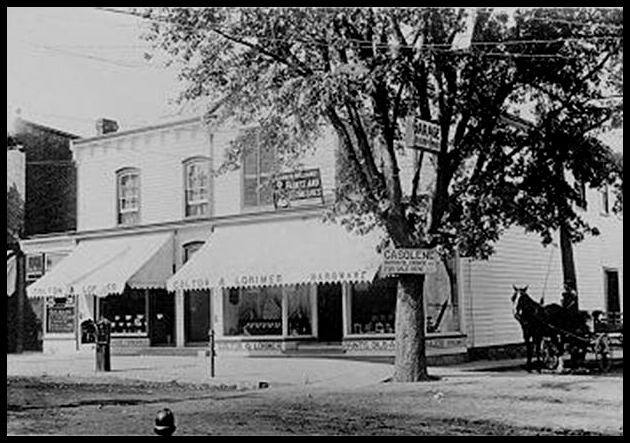 The Allen’s Hardware name was removed and the Colton & Lorimer name was added to the outside of the building in 1912. The historic building was located at the northeast corner of Pine & Brant Streets. This historic building met a fate all too familiar in Burlington, and was demolished. The retailing skills of Harry and Gordon were outstanding, as they both realized Burlington was growing quickly. Harry and Gordon understood that they needed to supply all of the local market gardeners with proper farm supplies, implements, and chemicals, plus they were also aware that new housing starts, and new building construction would provide incremental retail sales. To have everything in stock for both farmers and homeowners, and at the same time was a massive retailing nightmare. Big “Box stores” were not in Burlington yet, close to 100 years into the future, but Harry and Gordon knew exactly what would sell and what to stock in their store. Burlington was their market, and their shrewd retailing skills made Harry and Gordon very successful businessmen.
The Colton & Lorimer Hardware store was extremely successful, undoubtedly the most successful retail location on Brant Street, and most residents in Burlington shopped there. If you were lucky enough to have a telephone in Burlington, you could call Colton & Lorimer. Their number was “9”. If Colton & Lorimer didn’t have what you wanted, then you really didn’t need it. Colton & Lorimer had fine-tuned hardware retailing to a science.
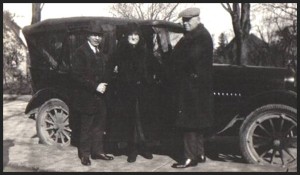 Harry Lorimer proved to be a superior retailer, and as a result the Lorimer’s attained substantial affluence. Along with the purchase of a custom made house, built by Burlington’s most prominent builder, George Allen; Harry & Seba also acquired a luxurious automobile and were driven about town by Bob, their chauffeur. With hard work, comes the spoils, Burlington’s on a roll
Harry and Seba finally decided to purchase a new home. They also decided to buy an automobile, and hire a chauffeur to drive them around. The hardware business was doing that well. The beautiful home they chose was built by Burlington’s most prominent home builder George Allen. Many of George Allen’s beautiful homes have now been designated as historical. The Lorimer residence was built in 1914 on a lot to the north of George Allen’s own historic house at 1391 Ontario Street. George Allen did not disappoint the Lorimer family. Their new home was stunning. The historic Lorimer family is at 504 Burlington Avenue, and the house just had its 100th birthday.
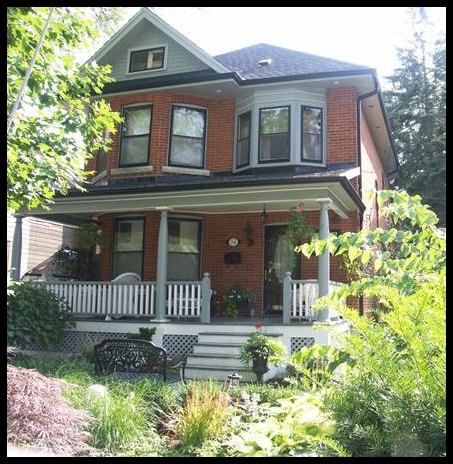 George Allen built this beautiful home for the Lorimer family, and they moved here in 1914. The house at one time was recognized as historical, but in 2013 it was removed from the Registry by the City of Burlington for alleged lack of historical significance. City of Burlington insults Harry Lorimer’s legacy 50 years later
This beautiful home was lived in by the prominent Lorimer family for 50 years, from 1914 until 1964, and at one time was recognized as historical and added to the Municipal Register of Cultural Heritage Resources, then was officially removed from the Register in 2013 for what was said the be a lack of historical, architectural, or contextual value. (I know what you’re thinking, I’m not making this up, it really happened). The City of Burlington defends its heritage reasoning found on their website as follows:
What is Heritage Conservation?
“Heritage conservation involves identifying, protecting and promoting the elements that our society values. Heritage conservation has traditionally been associated with protecting the physical or built environment (buildings, structures, landscapes, facts etc.). More recently, the term has also come to be associated with safeguarding the non-physical associations between people and a place (associations linked to use, meanings and cultural or spiritual values).”Taken from Parks Canada Standards and Guidelines for the Conservation of Historic Places in Canada
Why is Conservation Planning Important?
The conservation of built heritage is an integral part of the land use planning process at the City of Burlington. It entails planning for the identification, protection and promotion of the heritage resources that our community values. Burlington’s heritage is a living legacy that helps us understand our past, provides us context for the present and influences our future.
Why Conserve our Heritage?
The conservation of cultural and heritage properties is vital to a community’s overall cultural and economic development and it can enrich our lives, inspire us and create a sense of community that can sustain generations. The Heritage planning process in Burlington is overseen by staff in consultation with the Heritage Burlington Committee.
The Passing of Harry Lorimer and his Family
Harry lived to be 99 years old, and passed away peacefully in 1960. His beloved wife Seba died 10 years earlier at 85 years of age in 1950. Gertrude, their daughter died at 76 years of age in 1964, and her husband Gordon tragically died at 31 years of age in 1918 as a result of the great influenza epidemic. They are all buried together as family, in Aldershot’s historic Greenwood Cemetery. All residents of Burlington owe a huge debt of gratitude to the Lorimer and Colton families. These two dynamic families were true genuine pillars of the community and did far more than their fair share in helping to build, shape and drive Burlington’s economic engine so efficiently into the 20th century
Plan to Attend Heritage Days
On Saturday, February 7th at Burlington Central Library, Heritage Days will be in full swing with many wonderful displays of Burlington’s local heritage featured for the public to view. Plan to take the children or grandchildren. It’s free to everyone. There will also be several guest speakers throughout the event. Heritage Days will be from 10:00 AM to 3:30 PM. One display you will not want to miss, will be the Burlington Junction Train Station 1:24 scale model. This beautiful model was handcrafted by Burlington resident, Mr. Bob Chambers. Thanks to Bob’s talents, you will get to see what life was like in 1906 when the historic train station opened, and Harry Lorimer was its first Station Master.
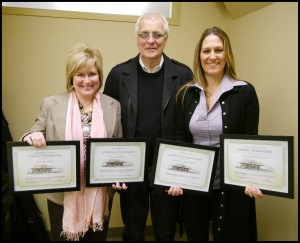 Councillors Marianne Meed Ward and Blair Lancaster, both heritage preservation advocates were recognized by the citizen group “Friends of Freeman Station” for their perseverance and leadership in convincing the others on City Council that the Freeman Station was worth saving. 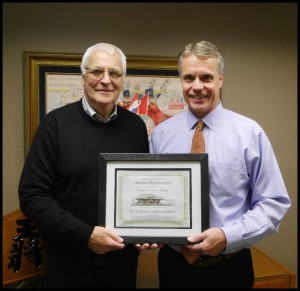 Mayor Rick Goldring was recognized by “Friends of Freeman Station” for his personal involvement in helping to save the Freeman Station from demolition, as recommended by the City of Burlington. Mayor Goldring received a Lifetime Membership to Friends of Freeman Station from Brian Aasgaard, President of Friends of Freeman Station. The Friends of Freeman Station will be there to answer all of your questions. Please plan to donate generously to help these exceptional volunteers complete the restoration of this magnificent historical building, something the City of Burlington could not accomplish. Without private financial support, this Burlington Junction restoration cannot be completed. There is no local, provincial, or federal government funding.
My next article on February 9th will be on the Burlington Junction Station, or as it is so often called, the Freeman Station. Find out why I believe Burlington Junction Station is Burlington’s most historical building, and why we need to make sure this part of our local heritage is preserved for future generations.
Related article:
What the Freeman Station really meant to the growth of the city; it was the key link in the transition of the city

 By Pepper Parr By Pepper Parr
July 30th, 2021
BURLINGTON, ON
OPINION
Politics can be a cruel mistress.
A number of months ago Andrea Grebenc thought she had grown to the point where she decided she would like to try something bigger in the world of politics.
She was chair of the Halton District School Board. The Burlington Provincial Liberal Association was going to have to nominate a candidate soon and Grebenc thought she could do that job.
The process to the actual nomination of a candidate for the Liberals was messy – sloppy is perhaps a better word.
 Ward 2 Councillor Lisa Kearns was coy about seeking the Liberal nomination. She announced; shortly afterwards Andrea Grebenc announced she was also running for the nomination. Kearns withdrew. The Liberals invited ward 2 Councillor Lisa Kearns to seek the nomination. After a month or so of saying maybe yes – maybe no publicly, she finally came out and said she would seek the nomination.
A few days later Grebenc announced her intention to see the nomination.
Within 48 hours Kearns withdrew.
By that time there was a third candidate seeking the nomination.
Mariam Manaa announced she would seek the nomination. Ms Manaa, a young Muslim woman had been recruiting new members for the Burlington Provincial Liberal Party since January.
Grebenc chose to wait until May 27th to file her papers. The Provincial Liberals set June 6 as the date for the nomination meeting.
 Andrea Grebenc, chair of the Halton District School Board – lost the nomination contest. Grebenc explained to the Gazette at the time that she was working regularly with Jane McKenna, the MPP for Burlington and felt that it would be rather awkward to be working with McKenna and at the same time preparing to run against her.
Thus the wait until May 27th.
With just 10 days to sign up new members there wasn’t much of a chance to overcome the new membership lead that Ms Manaa had.
“I can tell you that the Manaa supporters were very loyal. I called many of them – they weren’t budging.”
Ms Manaa is the Liberal candidate – she won fair and square – the problem was that the rules didn’t allow those who had been Liberal supporters with Party experience to make a choice.
Anybody could become an instant Liberal. All you had to do was live in the city and be able to prove it.
The process turned out to be a race to see who could recruit new members – Manaa recruited more than anyone else and won.
The nomination process was unfair to both Grebenc and Manaa – they were limited to a 10 minute speech with nothing in the way of debate between the two women.
 Mariam Manaa – Liberal candidate . Manaa has some very credible experience in the community. Her work for the Member of Parliament was much appreciated by the Minister and the community that she was able to help.
We were indeed in the middle of a pandemic and there were stiff restrictions. But not so many that a debate could not have taken place and streamed live.
Neither candidate was given a chance to show their stuff.
The blame for this rests in the hands of the Burlington Provincial Liberal party executive. They failed the party; they failed the candidates, and they failed the people of Burlington.
Hopefully Ms Manaa will create an election team and keep her distance from the Burlington Provincial Liberal Association – they have proven to be incompetent.
Salt with Pepper is the musings, reflections and opinions of the publisher of the Burlington Gazette, an online newspaper that was formed in 2010 and is a member of the National Newsmedia Council.

|
|
 By Ray Rivers
By Ray Rivers




 Ray Rivers, a Gazette Contributing Editor, writes regularly applying his more than 25 years as a federal bureaucrat to his thinking. Rivers was once a candidate for provincial office in Burlington. He was the founder of the Burlington citizen committee on sustainability at a time when climate warming was a hotly debated subject. Ray has a post graduate degree in economics that he earned at the University of Ottawa. Tweet @rayzrivers
Ray Rivers, a Gazette Contributing Editor, writes regularly applying his more than 25 years as a federal bureaucrat to his thinking. Rivers was once a candidate for provincial office in Burlington. He was the founder of the Burlington citizen committee on sustainability at a time when climate warming was a hotly debated subject. Ray has a post graduate degree in economics that he earned at the University of Ottawa. Tweet @rayzrivers













 By Staff
By Staff Cooling Centre information:
Cooling Centre information: By Staff
By Staff
 By Pepper Parr
By Pepper Parr No one has the right to decide they are not going to be vaccinated when it is now clear that vaccination stop the spread of the virus.
No one has the right to decide they are not going to be vaccinated when it is now clear that vaccination stop the spread of the virus.

 By Staff
By Staff Property was stolen at the Griffith Court location where a lone thief stole a heavy-duty utility wagon. The wagon is valued at over $200.00. Surveillance cameras caught images of the thief as he stole the wagon.
Property was stolen at the Griffith Court location where a lone thief stole a heavy-duty utility wagon. The wagon is valued at over $200.00. Surveillance cameras caught images of the thief as he stole the wagon. The second-hand store, The Attic, was vandalized late Saturday night or early Sunday morning. Police notified Burlington Humane early Sunday morning that someone threw a rock through the front window. Clean up began immediately and through Sunday morning.
The second-hand store, The Attic, was vandalized late Saturday night or early Sunday morning. Police notified Burlington Humane early Sunday morning that someone threw a rock through the front window. Clean up began immediately and through Sunday morning.


 By Ryan O’Dowd, Local Journalism Initiative reporter
By Ryan O’Dowd, Local Journalism Initiative reporter




 By Maddy Van Clieaf: Local Journalism Initiative reporter
By Maddy Van Clieaf: Local Journalism Initiative reporter












 By Staff
By Staff The City and the Region were required to provide time frames and firm commitments so that the 40+ appeals of the city’s adopted but not in force Official Plan could proceed.
The City and the Region were required to provide time frames and firm commitments so that the 40+ appeals of the city’s adopted but not in force Official Plan could proceed. The city’s legal team expressed surprise at the 54 pages of issues received, adding it simply was not possible to meet the deadline.
The city’s legal team expressed surprise at the 54 pages of issues received, adding it simply was not possible to meet the deadline.



 No doubt about it, everyone at the time believed this was a “WIN-WIN” situation. Spencer Smith’s story was a perfect example of one that seemed to have a happy ending.
No doubt about it, everyone at the time believed this was a “WIN-WIN” situation. Spencer Smith’s story was a perfect example of one that seemed to have a happy ending.
 This became an economic issue more than anything else. It was strictly a case of supply and demand. Most of these organizations were faced with a huge demand. They had great difficulty in meeting the demand by farmers and governments in Canada and Australia. It was stated at one time that there were 10 applications for every child. So what were they going to do? The answer was simple. Start rounding up any child who potentially was wayward and lived in the area that was to be scoured for recruits. Overly simplified, absolutely, but not by much.
This became an economic issue more than anything else. It was strictly a case of supply and demand. Most of these organizations were faced with a huge demand. They had great difficulty in meeting the demand by farmers and governments in Canada and Australia. It was stated at one time that there were 10 applications for every child. So what were they going to do? The answer was simple. Start rounding up any child who potentially was wayward and lived in the area that was to be scoured for recruits. Overly simplified, absolutely, but not by much.
 They were forced to live in exclusion on the farmer’s property, and not interact with the farmer’s own children or have any friends of their own. They were not loved or nurtured in any way. We know that they were constantly tormented and bullied by other children at local schools, and even adults participated in this human degradation of these children. We know that many just eventually disappeared. Where you ask?
They were forced to live in exclusion on the farmer’s property, and not interact with the farmer’s own children or have any friends of their own. They were not loved or nurtured in any way. We know that they were constantly tormented and bullied by other children at local schools, and even adults participated in this human degradation of these children. We know that many just eventually disappeared. Where you ask? Albert had just arrived from England with many other British Home children and they all disembarked at Halifax from the ship Albertic on March 17, 1930.
Albert had just arrived from England with many other British Home children and they all disembarked at Halifax from the ship Albertic on March 17, 1930. Where do we stand? Sadly, and unfortunately, the Canadian Government has essentially taken the position that this isn’t really a big deal, and no apology is warranted or forthcoming, even though they backed and encouraged this form of child slavery and abuse under the guise of helping disadvantaged children. Personally, I think that Jason Kenney the Cabinet Minister responsible for these remarks was not that well informed on the situation when confronted with the apology question, and consequently brushed it off as unimportant. I encourage you to contact Burlington’s local Federal Member of Parliament, Mr. Mike Wallace, who is a very decent man, and please voice your concern. I would like to think that Mike can champion this cause and help us get this apology from the Canadian Government. It’s long overdue, and it’s the right thing to do.
Where do we stand? Sadly, and unfortunately, the Canadian Government has essentially taken the position that this isn’t really a big deal, and no apology is warranted or forthcoming, even though they backed and encouraged this form of child slavery and abuse under the guise of helping disadvantaged children. Personally, I think that Jason Kenney the Cabinet Minister responsible for these remarks was not that well informed on the situation when confronted with the apology question, and consequently brushed it off as unimportant. I encourage you to contact Burlington’s local Federal Member of Parliament, Mr. Mike Wallace, who is a very decent man, and please voice your concern. I would like to think that Mike can champion this cause and help us get this apology from the Canadian Government. It’s long overdue, and it’s the right thing to do.














